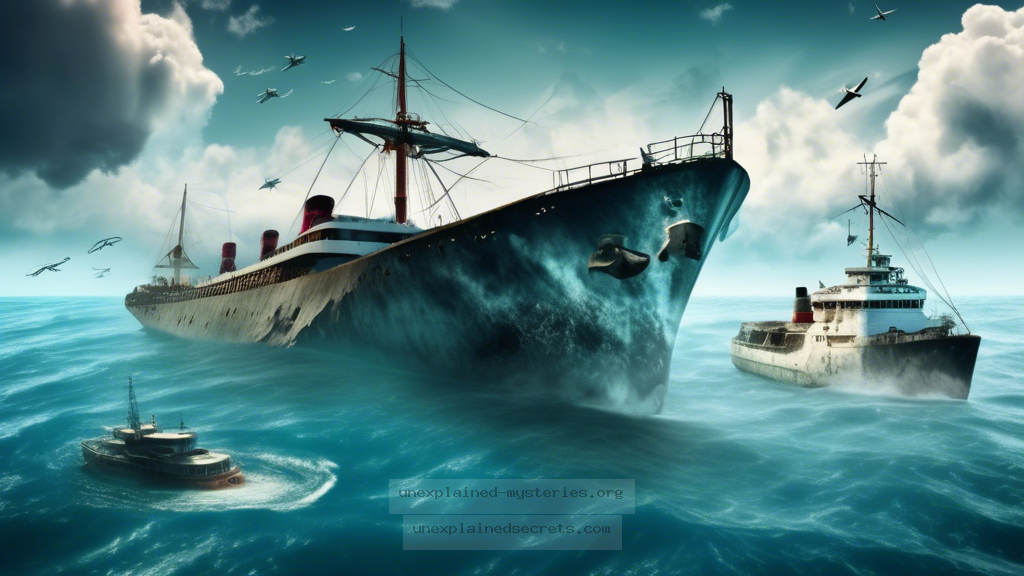What Really Happens to the Ships and Planes That Disappear in the Bermuda Triangle?
What Really Happens to the Ships and Planes That Disappear in the Bermuda Triangle?
The Bermuda Triangle, a region in the western part of the North Atlantic Ocean, has long fascinated and bewildered people due to its reputation for mysterious disappearances of ships and aircraft. The question of what really happens to the vessels and planes that vanish in this notorious area is not only a matter of curiosity but also a significant point of investigation for historians, scientists, and paranormal enthusiasts alike. This blog post delves into this enigma, exploring historical accounts, theories, and the ongoing research surrounding the Bermuda Triangle’s mysteries.
Historical Context
The mythos of the Bermuda Triangle began to take shape in the 20th century. Although the area had seen its share of maritime misfortunes for centuries, it wasn’t until the publication of Vincent Gaddis’s book “Invisible Horizons” in 1965 that the term “Bermuda Triangle” was popularized. Gaddis linked a series of incidents involving missing aircraft and ships, suggesting a common paranormal cause. Notable cases include the disappearance of Flight 19, a squadron of five TBM Avenger torpedo bombers, on December 5, 1945, which has become emblematic of the area’s mysteries.
In the years following Gaddis’s work, more incidents were reported, and the Bermuda Triangle became a staple of folklore and conspiracy theories, with claims of alien abductions, underwater cities, and time warps. Yet, many of these accounts lacked rigorous documentation, making it essential to sift through the sensationalism to find credible evidence.
Core Concepts and Theories
Theories attempting to explain the disappearances in the Bermuda Triangle can be broadly categorized into natural phenomena, human error, and the paranormal. Here are some of the most discussed concepts:
- Natural Phenomena: Hypotheses include rogue waves, underwater earthquakes, and methane hydrates that could potentially cause vessels to sink unexpectedly.
- Human Error: Many aviation and maritime experts argue that human error is the leading cause of the incidents. Factors such as navigational mistakes, harsh weather conditions, and lack of preparedness can lead to tragic outcomes.
- Paranormal Explanations: Some enthusiasts posit that the Bermuda Triangle is a gateway to other dimensions or a site of extraterrestrial activity, although these theories lack empirical support.
Documented Cases: A Closer Look
To better understand the phenomenon, let’s examine a few documented cases of disappearances in the Bermuda Triangle:
| Incident | Date | Details |
|---|---|---|
| Flight 19 | December 5, 1945 | A squadron of five bombers disappeared during a training flight. Despite a massive search operation, no wreckage was found. |
| USS Cyclops | March 1918 | A navy cargo ship vanished without a trace while carrying a full load of manganese ore. No wreckage or distress signal was ever recovered. |
| Star Tiger | January 30, 1948 | A British South American Airways passenger plane disappeared on a flight from the Bahamas to Bermuda. A search revealed nothing. |
These cases reflect a mix of military and civilian incidents, underscoring the Bermuda Triangle’s diverse history of vanishings. Understanding these accounts is crucial for distinguishing between fact and fiction.
Natural Phenomena: The Scientific Perspective
Many scientists argue that natural phenomena may explain the Bermuda Triangle’s reputation. One of the most compelling theories is the presence of rogue waves. These enormous waves can rise suddenly and reach heights of over 100 feet, capable of swallowing large vessels whole. Oceanographer Dr. Simon Boxall has noted that the Bermuda Triangle is prone to such rogue waves due to its unique geography and ocean currents.
Another factor is the presence of methane hydrate deposits on the ocean floor. When these deposits destabilize, they can release large bubbles of gas, reducing the water’s density and causing ships to sink in seconds. This phenomenon has been observed in other parts of the world, suggesting that it could also play a role in the Bermuda Triangle.
Human Error: A Leading Cause
While theories about natural phenomena are compelling, human error remains a significant factor in many of the Bermuda Triangle incidents. Navigational mistakes, particularly in an area where traditional navigation methods may be compromised, can lead to disastrous outcomes. Pilots and captains must be adept at using modern navigation technology, but even then, human oversight can introduce errors.
Additionally, the region’s weather can change rapidly, creating dangerous conditions for both aircraft and ships. Pilots and mariners must constantly assess their surroundings and conditions, which can be challenging. The infamous “disappearing” nature of the Bermuda Triangle may often be more about human fallibility than any supernatural occurrence.
Alternative Perspectives: Debunking Myths
Despite the various theories, many experts argue that the Bermuda Triangle is no more dangerous than any other heavily traveled region of the ocean. The U.S. Board on Geographic Names does not recognize the Bermuda Triangle as an official name, suggesting that its notoriety is largely a product of myth and sensationalism.
Statistical analysis of disappearance rates shows that the Bermuda Triangle does not have a higher incidence of maritime accidents compared to other regions of the world. In fact, the area is heavily trafficked by both commercial and private vessels, making it statistically likely that incidents will occur.
Common Misconceptions and Clarifications
A common misconception is that hundreds of ships and planes have vanished without a trace. In reality, many purported disappearances can be traced back to documented incidents where wreckage was found or where vessels were simply delayed due to navigational errors. The narrative of the Bermuda Triangle has often been exaggerated for dramatic effect.
Another myth involves the idea that the Bermuda Triangle is a “no-go zone” for mariners and aviators. While it is true that caution is advised, professional mariners and pilots routinely navigate the area without incident. Training and proper equipment are key to ensuring safety in this region.
Best Practices for Investigation and Study
Researchers interested in investigating the Bermuda Triangle should adopt a multidisciplinary approach. This includes:
- Historical Research: Collecting and analyzing historical accounts to establish a comprehensive understanding of past incidents.
- Scientific Study: Utilizing oceanographic and meteorological data to investigate natural phenomena that may contribute to incidents.
- Public Awareness: Educating the public about the realities of the Bermuda Triangle to dispel myths and encourage safety.
Utilizing modern technology such as remote sensing and underwater drones can also yield valuable insights into the ocean floor and potential hazards. Collaboration with universities and maritime agencies can foster a more thorough understanding of this enduring mystery.
Future Developments and Ongoing Research
As technology advances, new opportunities for research into the Bermuda Triangle emerge. Scientists are increasingly turning to satellite imaging and deep-sea exploration to understand the region better. Recent initiatives aim to map the ocean floor more accurately, identifying underwater geological features that may contribute to the area’s hazardous reputation.
Additionally, ongoing studies of climate change and its impacts on oceanic conditions may provide insights into how weather patterns affect navigation and safety in the Bermuda Triangle. The rise of autonomous vessels and drones could also change the way the area is navigated, potentially reducing the risks associated with human error.
Conclusion
The mystery of what happens to ships and planes that disappear in the Bermuda Triangle remains a compelling topic of investigation. While natural phenomena and human error provide plausible explanations for many incidents, the area continues to capture our imagination and inspire numerous theories, from the scientifically grounded to the paranormal.
As we continue to explore this enigmatic region, a balanced approach that combines historical research, scientific inquiry, and public education will be crucial. While the Bermuda Triangle may not hold the secrets of the universe, it serves as a powerful reminder of the ocean’s vastness and the need for respect and caution in navigating its waters. 🌊
Other Articles
Recent Posts
- What Happened to Flight MH370? The Conspiracy Theories That Still Haunt Us
- What Secrets Lurk Within the Walls of the Infamous Trans-Allegheny Lunatic Asylum?
- What Evidence Supports the Existence of Bigfoot in the Pacific Northwest?
- What Happened to the Indus Valley Civilization? Unraveling the Mysteries of Ancient Urban Life
- Can Telepathy Be Scientifically Proven Through Laboratory Evidence?







